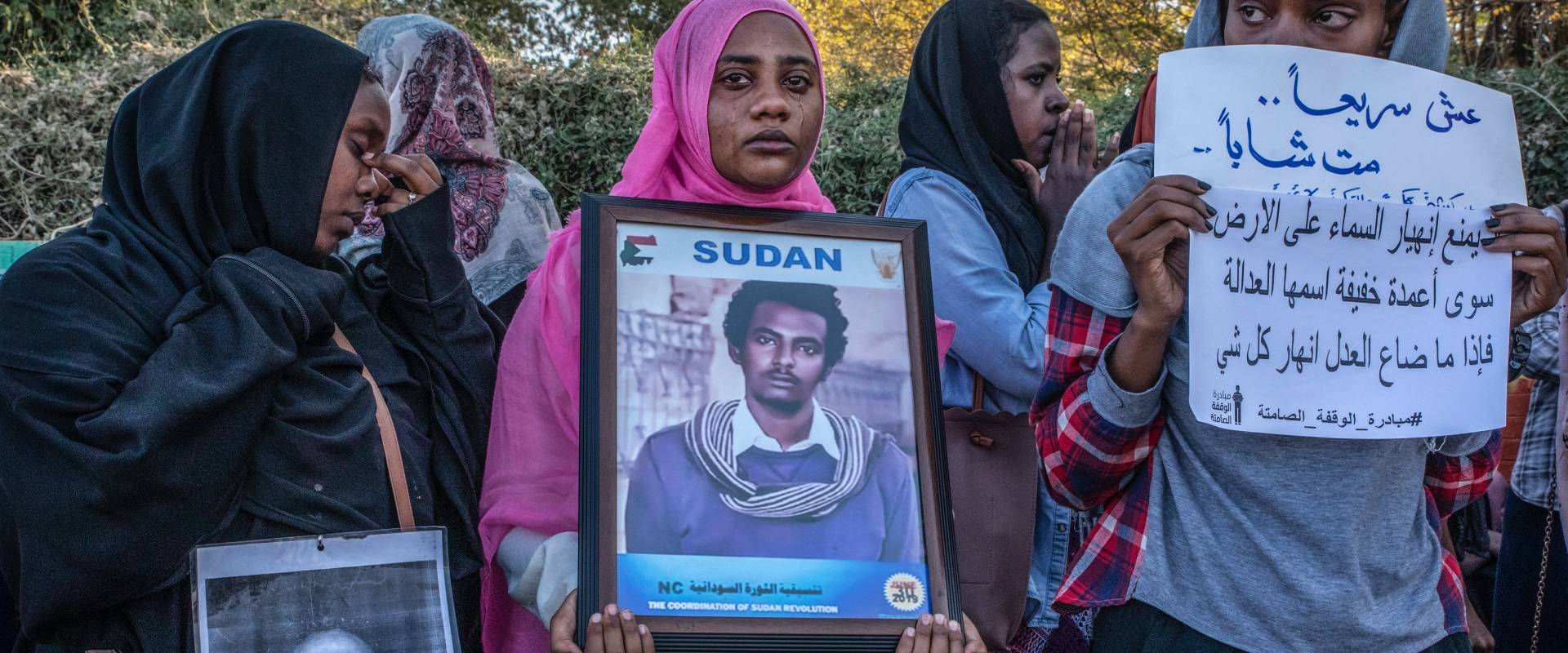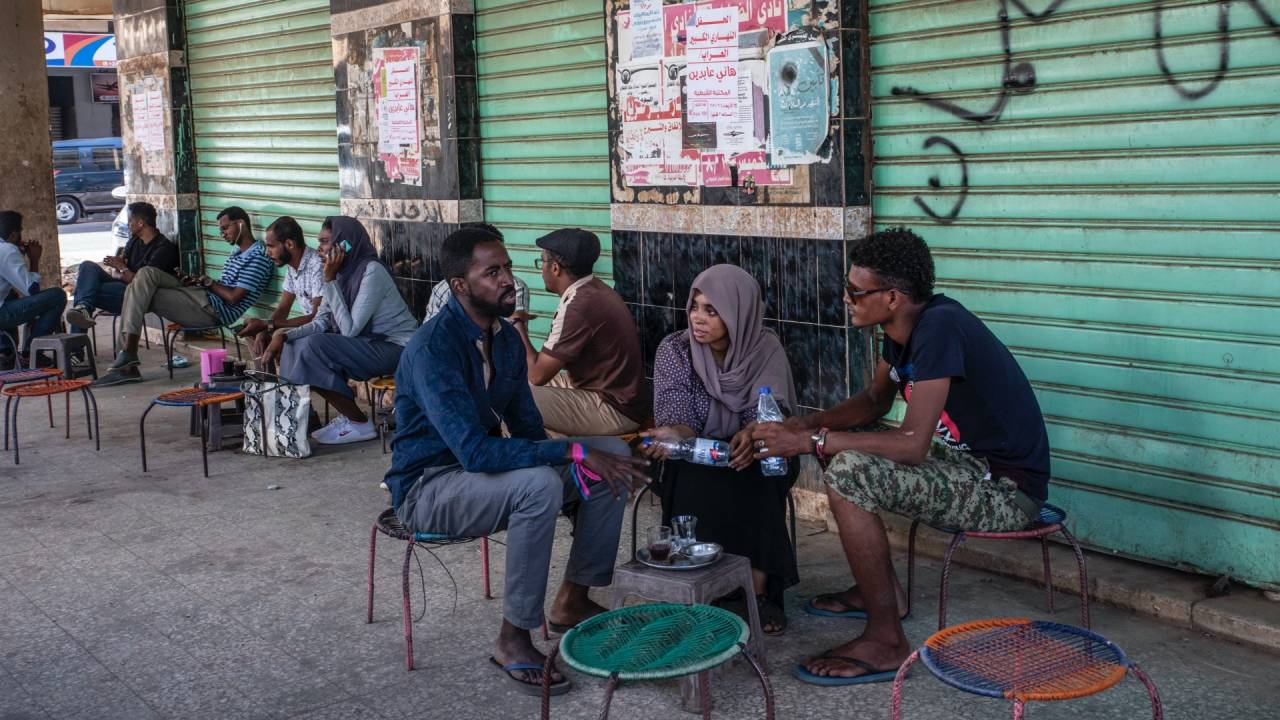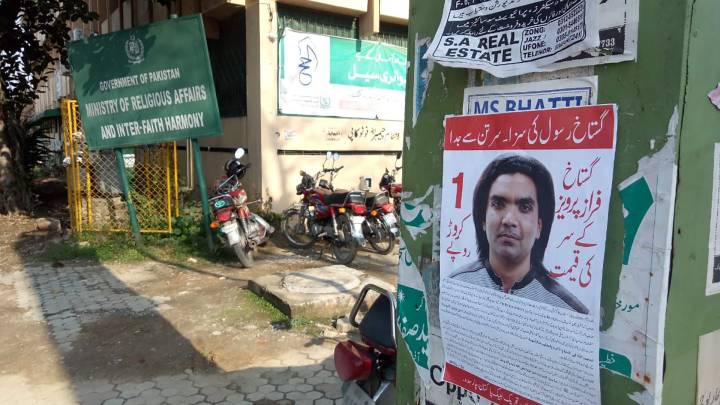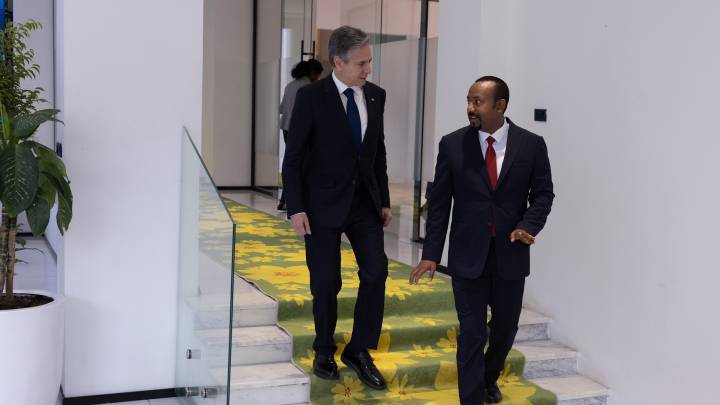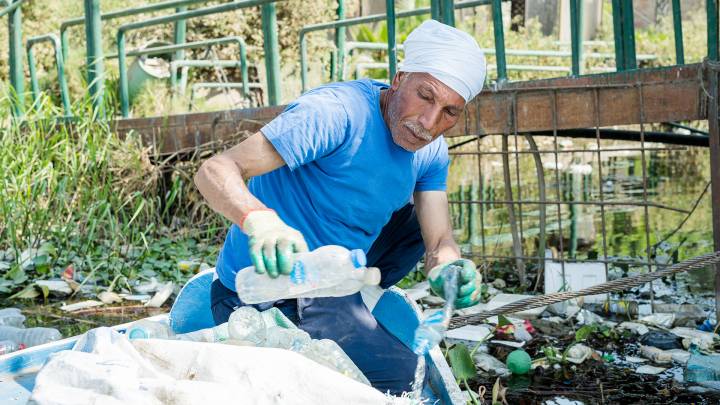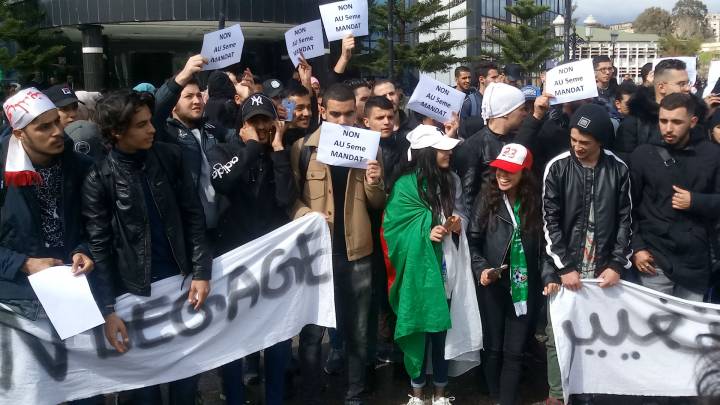On 3 June 2019, Sudanese security forces massacred hundreds of demonstrators. Memories of anger and desperation among those revolutionaries who survived run deep. Can they help to build a democratic future for Sudan?
“Like each and every Ramadan night, I was preparing Iftar meals with other revolutionaries, to break the fast at sunset time,” says Tawdia, while looking to the corner in which one year before self-organized kitchen spaces were set up during the sit-in. “Then I went back home. I enjoyed every single moment of that night. I didn’t know it would be the last one.” Her eyes are always smiling, but remembering that day at the sit-in, not far from Nile Street in Sudan’s capital Khartoum, for a moment she held back her tears. Tawdia, a 25-year-old medical laboratory doctor, had spent the past year and a half “between the hospital and the revolution.”
That night her friend Abbas did not come back home. He used to spend the night over the sit-in’s tents as he did it for over 2 months. “I had the best time of my life there” he says, recalling the time in and around the tents at the sit-in, in front of Qiyyada al-‘Amma, the military headquarter. “And it was the most beautiful Ramadan. The sit-in became my second home,” he adds. Until that night. “It was 2 or 3 am at day 29 of the Ramadan [June 3 2019] when the news started circulating among the demonstrators and the tents. They [armed groups] were surrounding the sit-in to break it down. I didn’t believe that rumor. I didn’t pay attention to it. The morning prayer at dawn was about to start. We kneeled down and stood up, and then everything changed.”
Abbas, a 22-year-old student from Khartoum, is one of the witnesses of the brutal massacre during which hundreds of peaceful demonstrators were killed and several hundreds injured. The protesters have blamed the Rapid Support Forces (RSF) of planning and carrying out the massacre. RSF is a paramilitary group led by Mohammed Hamdan, known as Hemeti, whose uniforms were worn by the gunmen. Hemeti was a key figure in the pro-regime Janjaweed militias accused of genocide in Sudan's western Darfur region.
RSF forces, which grew out of the Janjaweed, were frequently reported as being involved in the crackdowns of the peaceful protests since the beginning of the revolution. At the time of the massacre, Hemeti was the deputy chairman of the ruling Transitional Military Council, which in August 2019 transferred its power to the civilian-military Sovereignty Council. He is now its deputy chairman, strengthening his position in the actual government.
That day at the end of Ramadan became a turning point in the history of Sudan’s revolution
The unrest in Sudan can be traced back to December 2018, when then President Omar Bashir's government imposed emergency austerity measures. Cuts to bread and fuel subsidies spurred people to join protests and the anger spread all over the country, including the capital Khartoum. The protests soon broadened into demands for the removal of the President, who had been in power for 30 years. The economic problems brought Sudanese from all walks of life to the streets, but the organisation of demonstrations was taken on by the Sudanese Professionals Association (SPA) - a collaboration of doctors, health workers and lawyers.
Mainly young protesters had filled the streets for months, but people of all generations had been participating. Women had been at the forefront of the movement and a picture of a university student, Alaa Saleh, standing and leading the chants had been widely shared on social media inside and outside the country.
That day at the end of Ramadan became a turning point in the history of Sudan’s revolution. Abbas, Tawdia and their friends are still coping with the bad memories and the pain that turned the life of all the peaceful young revolutionaries’ upside down. Every third of the months which followed the massacre they gathered in front of the University of Khartoum’s campus, next to the railway, to remember the martyrs of the revolution, and particularly the martyrs of the 29th day of Ramadan. They stood silently for an hour and then the chanting against the military regime began. In that silence, many of them cried, holding the pictures of the martyrs – their best friends and brothers.
The last sit-in took place on March 3 2020 which marked the ninth month of grief. Abbas’s best friend, Amro, a 31-year-old doctor, didn’t go. “I would like to commemorate the martyrs together with my friends. But I can’t go there. Sorry, I am still shocked,” he admits. Only a few weeks later, the global coronavirus pandemic reached Sudan, obliging the state authorities to impose a lockdown, especially in the capital Khartoum where most of the over 4,000 cases were registered. The fear of a serious outbreak, which Sudan’s health system would not be able to cope with, has also impeded the celebratiob of the first anniversary of the end of Omar al-Bashir’s dictatorship on April 11. The anniversary of the Qiyyada al-‘Amma sit-in hasn’t been celebrated either.
On April 6 2019, protesters gathered in front of the Military Headquarter in the capital Khartoum to demand the end of the 30-year-long dictatorship of Omar al-Bashir. After months of protests, their goal was initially reached: On April 11, the dictator was ousted by the Army. “I think the best moment the Sudanese people have ever experienced in life was the moment when they found out about the fall of Bashir”, Abbas tells zenith. “Moments of full joy, happiness, hope that Sudan will be a better place to live in after the end of the regime.”
But for Tawdia, Amro and Abbas, celebrating together with thousands of Sudanese protesters, the ouster of the former dictator was not enough. “We didn’t want the end of Bashir, we wanted the end of the whole regime. The Army had to go. We decided to stay,” Tawdia explains. The chants, filled with Sudanese slogans, also echoed the 2011’s revolutions in North Africa and in the Middle East. One familiar slogan in particular was heard again: ‘The people want the fall of the regime’. “And we really meant it,” the three of them agree.
“They were shooting at people, they caught me and tortured me with sticks”
Soon the sit-in became a space of dreams where the future of Sudan could reimagined. Music, poetry, political gatherings, dancing, workshops and self-managed courses by different associations, groups and individuals. At the art corner of the sit-in, M Jay brought all his and his friends’ musical instruments. M Jay is the nickname of Mohammed Hadi, a 28-years-old musician, passionate about Sudan traditional music and Reggae rhythms. With the help of musical instruments, he and his friends, co-founders of the Mellow Art Space, recreated a workshop-like ambiance where the young protesters were invited to listen and to learn to play music.
“At that time, I didn’t know that only a few months later, we would have used music as therapy to cope with the grief after the massacre.” M Jay had already sustained injuries. “If we talk about massacres during the last holy month of Ramadan, well there were two: one of the 8 [May 13] and the other on the 29. I was injured during the first one. I survived the second.”
What didn’t survive the June 3/Ramadan 29 massacre were all of M Jay’s musical instruments. They were completely destroyed. Like the tents where they lived and created the musical space. When they saw the first armed groups beating up demonstrators that morning, they ran away. “Some of the revolutionaries resisted for a while and tried to fight back or protect the crowd,” he recalls. “I just saw people falling down, bleeding and we all instinctively ran away.” Abbas, in another corner of the sit-in, at the very beginning, ran towards Nile Street. “The RSF had entered the sit-in from all sides. They encircled us, they had all kinds of weapons, from guns to tear gas to Kalashnikovs and others I can’t even name.”
But at some point, Abbas and some other friends, went back from Nile Street inside the area of the Military Headquarter. “I went back. I saw the massacre happening in front of my eyes. They were shooting at people, they caught me and tortured me with sticks. They raped girls. I saw girls harassed and raped. I saw that, it was in front of my eyes. They were throwing away the corpses of people beaten or shot dead, among them the girls. After having raped them, they were thrown away. We later learned many corpses were thrown into the Nile River. I asked myself, is that real?” Within only a few hours, nearby hospitals were filled with hundreds of people. “But the RSF completed their plan there: They didn’t allow protesters to get treatment”, Tawdia and Amro’s colleagues witnessed. “They didn’t allow the doctors to take care of the injured.”
Stretched and shocked, the Sudanese people didn’t surrender. They continued to demand that Sudan’s military leadership hand power to civilian rule. In July, a month after the slaughter, they managed to organize the “Millions March”, despite a widespread internet blackout. An agreement between the Transitional Military Council and the civilians, regrouped in the ‘Forces of Freedom and Change’, was reached in August, when a draft Constitutional Declaration was signed by both parties and a transitional civil-military government was established.
The revolution in the streets is in pause mode – but WhatsApp and Facebook groups are bursting as ever
Not all the revolutionaries celebrated the agreement. Many felt that even for a transitional period, they couldn’t trust the military, especially having Hemeti as a member. For Amro, Abbas and Tawdia the people in power were responsible for hundreds of planned murders, tortures and rapes, all felonies committed in order to disperse a peaceful sit-in. For them, these people still in power were responsible for their dreams turning into nightmares.
Although the newly drafted constitution contains explicit commitments to promote human rights and access to justice, “it did not abrogate or modify laws that currently still deny justice for survivors of violations carried out by security forces, nor for families of those killed by them,” as the Physicians for Human Rights report asserts, which collected tens of survivors’ testimonies. Instead, the draft constitution preserves existing laws, defending in particular the ones that provide immunity for acts committed by security forces in the line of duty. “The Revolution will not be accomplished until the killers of Sudanese people will be held accountable for these crimes,” Amro affirms.
As a witness of the massacre, Abbas talked to the ‘Commission of Inquiry and Investigations’ tasked with reviewing crimes and violations. “It is an independent Sudanese commission” lawyer Mohammed Mamoun says, “but in my opinion, an international commission to investigate the Army’s violence during last Ramadan, and to assure the integrity of procedures and transparency of the Commission, is needed.” Mohammed considers himself a lawyer of the revolution. “I belong to the ‘Committee for Resistance and Change’ and particularly to a committee called the Legal Committee, which aims to protect the members of the Committee and focusses on any case of corruption that might occur.” One of the challenging issues for Sudan’s future is to weed out corruption. “But without justice for the Martyrs of the Revolution, we won’t go anywhere”, Mohammed Mamoun affirms.
Abbas and his comrades fear that the military will not respect the agreement and will remain in power, strengthened by the support of al-Sisi's Egypt, the United Arab Emirates and Saudi Arabia. "One dictator worse than the other wants to suffocate our revolution, of course," he concludes concerned. A sad warning came on March 9 this year. Sudan's prime minister Abdalla Hamdok survived an assassination attempt after his convoy had been attacked in the capital, Khartoum. Hamdok was appointed to head Sudan's transitional government last August, a few months after the overthrow of Omar al-Bashir. Many revolutionaries place their hopes on him, despite the divisions within the civilians’ movement after the August agreement. Immediately of the attack, Hamdok withdrew to his office to continue his work. But it is still unclear who the perpetrators of the attempted murder are.
Abbas, Tawdia and Amro didn’t know each other before the start of Sudan’s revolution. They met up there, in the streets of a new Sudan, in April 2019, together with thousands of people: “We were all living together, eating and singing together, without any racist prejudices or discrimination. All colors and religions, Muslims, Christians, Communists, secular people, people with different ideas, coming from all of Sudan’s regions,” Abbas remembers.
Now they support each other. Amro went to the last March sit-in with Tawdia and Abbas after all to remember the victims of the massacre. He spent all his time crying behind the protestors chanting. “It was the first time after June 3 I went there”, Amro tells zenith. “But with the lockdown starting and the fear of the future lurking, I am glad I confronted my nightmares for one afternoon.” Amro and Tawdia are working every day at the hospital. Abbas is at home. The revolution in the streets is in pause mode – but WhatsApp and Facebook groups are bursting as ever. “The revolution continues until we have a 100% civilian rule,” Tawdia says. “Covid-19 will not stop it”. The movement of the Sudanese revolution has a long path to walk, but it wants to keep a promise to the June 3 massacre’s victims: to go on, peacefully, straight to the goal of a civilian-led democratic country.
